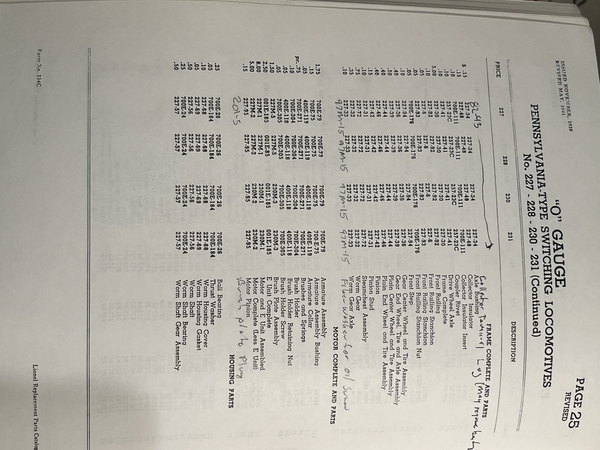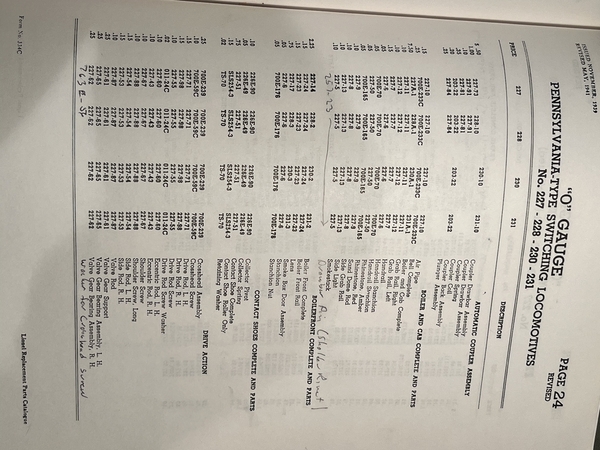I had a question asked about repairing a broken marker light on a 228. The answer is a little complicated because there are at least three different replacement marker lights out there. The marker lights are made of brass. I assume they are a screw machine product. If possible, I use a file to get a flat smooth surface on the broken part. Then I center punch trying my best to hit the center of the part. Then I drill the broken part out. The zinc appears to have gotten quite hard, so in my experience I have not had trouble with the drill walking into the zinc. The old brass post cuts like soft butter.
The size of the drill depends on the replacement marker light I am going to use. I have run across four distinct marker lights, all requiring a different drill size. I do not want a tight fit, as the marker lights on the boiler have to be removed to change the boiler hand rails. The first marker light I identify as early prewar. It is 0.076” diameter over the shaft and 0.078” over the serrations. To install one of these I would use a #48 drill, 0.076” diameter. The second marker light I identify as late prewar. It is 0.076” diameter over the shaft and 0.086” over the serrations. To install one of these I would use a #45 drill, 0.082” in diameter. The third marker light I believe is made for the 1989 remake. It is the part most commonly available. It is 0.086” diameter over the shaft and 0.088” over the serrations. To install one of these I would use a #44 drill, 0.086 in diameter. On this application it might be best to drill out the broken post with the #48 drill first, then open up the zinc die casting with the #44 drill as a secondary operation. The forth marker light is probably from the repro market and is of such poor quality that I would not install one. On any of these, if it is felt that the marker light is going in too tight, file the serrations to a smaller diameter, maybe putting a little taper on them. If the marker light is loose in the hole I use a little Walter’s Goo. This will hold the marker light in, but not so tight that it cannot be removed if necessary. When installing the 1989 marker light on a prewar loco, even if drilling out a broken stub is not required, the shaft is so large that the hole needs to be drilled out to get the new part in.
In a technical note regarding the prototype B6 switcher, I do not know if these are marker lights or classification lights. Maybe class lights on the loco and markers on the tender? It would be interesting to know for sure.













